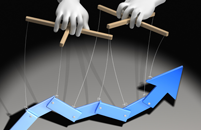Articles by Category
Articles by Issue
Recent Comments
- Stephen Brodsky on Harming Children: Uncovering and Overcoming Bias When Defending Sex Crimes Against Children
- Laura on Courtroom Attire: Ensuring Witness Attire Makes the Right Statement
- Members selection — Court-Martial Trial Practice Blog — February 22, 2014 on Why Do We Ask Jurors To Promise That They Will Do the Impossible?
- Video: Pryor Greed and Lawyers | Parents Rights Blog on Ethical Issues in Racial Profiling
- On the relationship between ideological and demographic diversity on Inaccuracy in Political Self-Perception: Young Adults Are Not as Conservative as They Believe
- Taylor Bishop on Tips for Preparing the Expert Witness
- Thanks for stopping by…. « The Jury Room on Book Review- Social Media as Evidence: Cases, Practice Pointers, and Techniques
- Thanks for stopping by…. « The Jury Room on Book Review: The Juror Factor: Race and Gender in America’s Civil Courts
Communication Archive
-
Trial Advocacy: Truthiness, Falsiness, and Nothingness
by Kathy Kellermann, Ph.D.Posted on November 5, 2013 | 9 CommentsExtra-evidentiary ideas, thoughts, and associations make their way into your courtroom and deliberation room. How? Read on. -
Classics: Everything Old Is New Again
by Rita R. Handrich, PhDPosted on August 1, 2013 | 1 CommentThe digital version of The Jury Expert has been successful beyond our expectations. That was not always the case. When the print version of The Jury Expert was discontinued in 2007, we had fewer than 500 subscribers. The publication is very different now but what we’ve noticed is that an […] -
Strategies for More Effective Voir Dire
by Ronald J. Matlon, Ph.D.Posted on August 1, 2013 | No CommentsAll potential jurors have biases and prejudices. Individual bias stems from all we experience, and shapes the perceptions we, as jurors, have of evidence. These perceptions can certainly influence final jury verdicts.[1] Identifying juror bias is critical. Yet, “the detection of juror bias is a serious challenge in contemporary jury […] -
Time to Rethink 3M?
by Laura RocheloisPosted on August 1, 2013 | 1 CommentWhen it comes to pitching the use of trial graphics, there’s not much out there that gets more play than the well-known 3M Study.[1] The 1986 study sponsored by 3M and conducted at the University of Minnesota proclaimed in bold letters on the first page of the published paper that […] -
The “Why” and “How” of Focus Group Research
by Douglas Keene, Ph.D.Posted on August 1, 2013 | 3 CommentsWhy focus groups? Properly conducted focus groups are extremely useful in getting reactions to a wide array of aspects of the case. While it is not prudent to expect that the “verdict” of a small group research project will be repeated at trial, it is very likely that the same […] -
Managing Hindsight Bias
by Merrie Jo Pitera, Ph.DPosted on August 1, 2013 | No CommentsThe Problem Human beings, especially jurors, like to believe they can prevent bad things from happening if they do the right thing. As a result, when something bad occurs, jurors find it comforting to assume, with the benefit of hindsight, that someone did the wrong thing and that they (the […] -
Do You See What I See? How a Lack of Cultural Competency May Be Affecting Your Bottom Line
by Michelle Ramos-Burkhart, J.D., LLMPosted on May 31, 2013 | 6 CommentsYour financial bottom line, the new global marketplace and the increased cultural diversity in our practices. -
The Scared Witness: A Chapter from “Can This Witness Be Saved”
by Katherine James, MFAPosted on May 31, 2013 | 1 CommentEver had a witness who wasn't just scared but was "truly terrified"? Read on. -
The Interview-Identification-Eyewitness Factor (I-I-Eye) Method for Analyzing Eyewitness Testimony
by Nell B. Pawlenko, Ph.D. and Richard A. Wise, J.D., Ph.D. and Martin A. Safer, Ph.D. and Brett Holfeld, M.S.Posted on May 31, 2013 | 6 CommentsHow a simple and free method of teaching jurors [and those law enforcement officials that come before] can help them assess eyewitness accuracy.

![Classics: Everything Old Is New Again The digital version of The Jury Expert has been successful beyond our expectations. That was not always the case. When the print version of The Jury Expert was discontinued in 2007, we had fewer than 500 subscribers. The publication is very different now but what we’ve noticed is that an […]](https://thejuryexpert.com/wp-content/uploads/small.png)
![Strategies for More Effective Voir Dire All potential jurors have biases and prejudices. Individual bias stems from all we experience, and shapes the perceptions we, as jurors, have of evidence. These perceptions can certainly influence final jury verdicts.[1] Identifying juror bias is critical. Yet, “the detection of juror bias is a serious challenge in contemporary jury […]](https://thejuryexpert.com/wp-content/uploads/effective-voir-dire-thumb.png)
![Time to Rethink 3M? When it comes to pitching the use of trial graphics, there’s not much out there that gets more play than the well-known 3M Study.[1] The 1986 study sponsored by 3M and conducted at the University of Minnesota proclaimed in bold letters on the first page of the published paper that […]](https://thejuryexpert.com/wp-content/uploads/rethinking3M-neurons-thumb.png)
![The “Why” and “How” of Focus Group Research Why focus groups? Properly conducted focus groups are extremely useful in getting reactions to a wide array of aspects of the case. While it is not prudent to expect that the “verdict” of a small group research project will be repeated at trial, it is very likely that the same […]](https://thejuryexpert.com/wp-content/uploads/focus-group.png)
![Managing Hindsight Bias The Problem Human beings, especially jurors, like to believe they can prevent bad things from happening if they do the right thing. As a result, when something bad occurs, jurors find it comforting to assume, with the benefit of hindsight, that someone did the wrong thing and that they (the […]](https://thejuryexpert.com/wp-content/uploads/hindsight.png)



![The Interview-Identification-Eyewitness Factor (I-I-Eye) Method for Analyzing Eyewitness Testimony How a simple and free method of teaching jurors [and those law enforcement officials that come before] can help them assess eyewitness accuracy.](https://thejuryexpert.com/wp-content/uploads/thumb_article7.png)